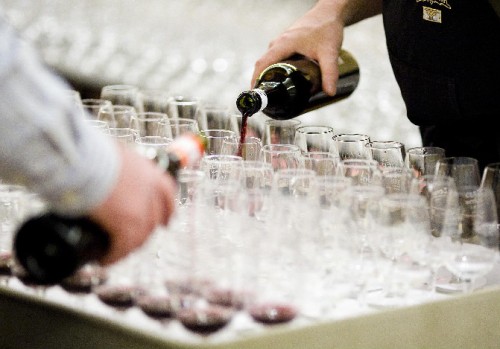
The Cuvee Awards, representing the best wines in Ontario as judged by winemakers, is a snapshot of what consumers can look forward to in the coming year.
The wines submitted to judges are chosen by the wineries, up to a maximum of four wines, and generally represent the best of what the winery will have for sale in the coming months.
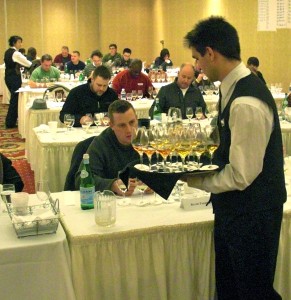
The submissions alone — this year a record-breaking 270 white, red and sweet wines — can tell a story of what winemakers feel are the best wines for consumers to try and buy.
More than 50 winemakers from Ontario, the majority from Niagara but with some from Prince Edward County and Lake Erie North Shore, gathered in January for an intense day of blind tasting to select this year’s winning wines. The wines tasted represent the largest field of entries in the history of the awards with 62 Ontario wineries submitting wines.
The winners are not announced until the Cuvee Gala on Friday, March 4, at the Niagara Fallsview Casino Resort in Niagara Falls.
The Cuvee Awards are unique in that they are the only awards in Canada where the winning wines are chosen by the winemakers themselves.
The judging process, a long day of tasting for the judges and independent review panel (by way of disclosure, I was a part of that five-person panel along with Linda Bramble, Chris Waters, David Lawrason and Gary Pickering), took place Jan. 20 at the Quality Inn in St. Catharines. It took the work of 25 volunteers who poured, served, tabulated and were responsible for co-ordinating the 6,000 wine glasses and more than 1,000 bottles of wine that were used during the tasting.
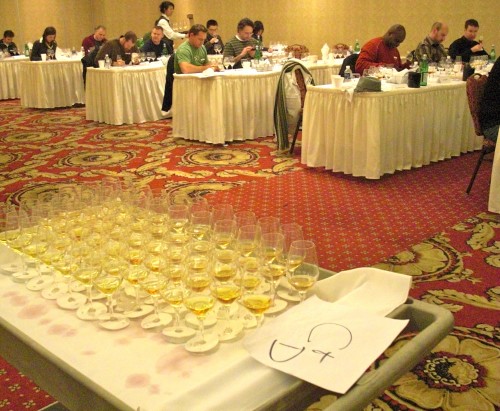
While judges won’t find out who won the top awards until the gala, as all tasting is conducted blind, they do know the vintage and varieties of all the wines judged. Here are some observations based on the tasting:
• Of the 65 “Bordeaux” varieties and red blends submitted, only 18 of those were not from the 2007 vintage. The Cabernet Sauvignon category, for example, had only two non-2007 wines entered in the category — one from 2006 and the other from 2008. All the reds in this category that I noted during the tasting as being standouts were from the 2007 vintage.
• In the aromatic white category, the Gewurztraminers from 2008, Pinot Gris from 2009, and a limited number of Viogniers from both 2008 and 2009 were outstanding. Some of the Gewurz tasted was stunning, with more powerful fruit and exotic spice and less of those rose petal-musk qualities that have dominated the variety in the past.
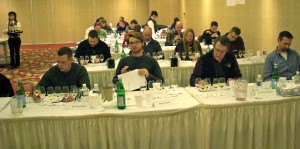
• The Chardonnay category was by far the most interesting. Wines were submitted from 2006, 2007, 2008 and 2009. A couple of the 09s were spectacular, the 07s were starting to fade (one would question why they were entered), and the 08s were good to very good across the vintage.
• The Riesling category was loaded down with fresh wines from the 2009 vintage, a sprinkling of 2008s and only one each from 2006 and 2007. The 09s were amazing, and consumers are advised to stock up on these wines that will cellar for up to a decade and the 08s are also very good. This category will be hotly contested and I’m looking forward to seeing which wines rose to the top. In many ways, I’d love see more older Rieslings entered and offered to the consumer. Riesling has such charm when left to mature in the bottle.
• Our panel, though we didn’t taste the full range of Pinots offered to other judges, had a bit of trouble with the ones we did judge. Only 15 Pinots were submitted (not a lot when you consider how much is made in Ontario) and it was divided almost evenly between the 2007, 2008 and 2009 vintages. Many feel 2009 will be a benchmark year for Pinots. Will that be reflected in the Cuvee winners in this category?
• The sparkling category was a mishmash of every vintage, non-vintage and myriad styles. There were a couple of standouts in this category, but generally I feel we should have more entries for sparkling wines and more wineries should be making this incredibly wonderful style of wine that does so well in Ontario. We need more sparkling wines.
• OK, here’s the thing. Sweet wines make up the largest category of the Cuvee Awards. This category has turned into a stylistic nightmare with almost all varieties now made into some kind of sweet wine — yes, even Pinot Noir and Syrah — as wineries try and grow this once mighty Canadian and international superstar. For me, the key to great icewine and late harvest wines, is acidity. And clearly not enough is made with this in mind. Sweet is good, but, please, balance it out with palate cleansing acidity.
Enjoy!


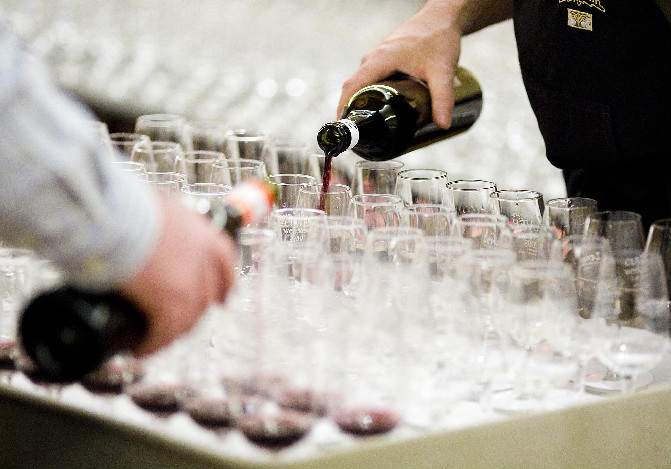



Comment here